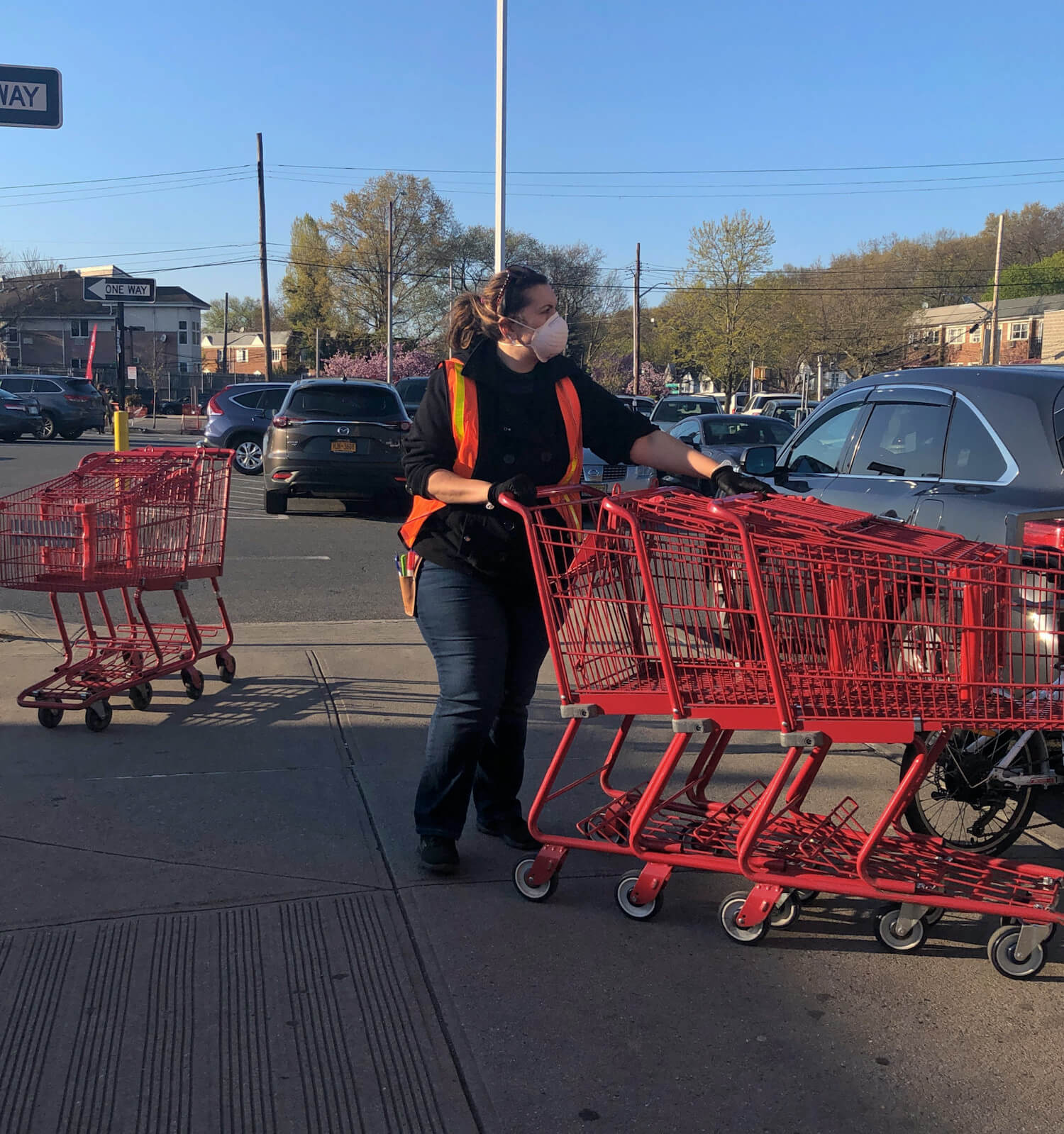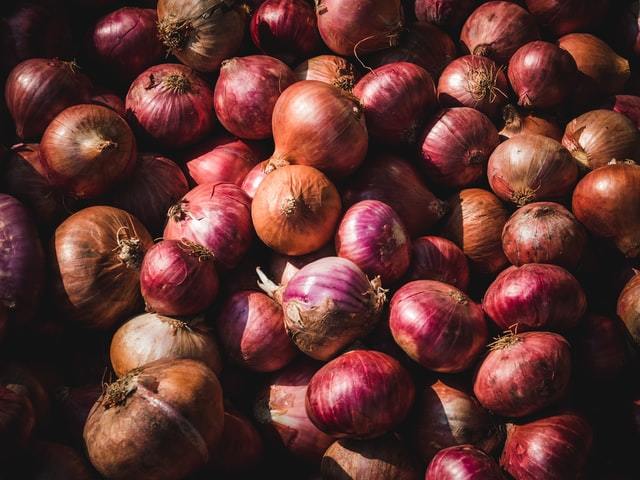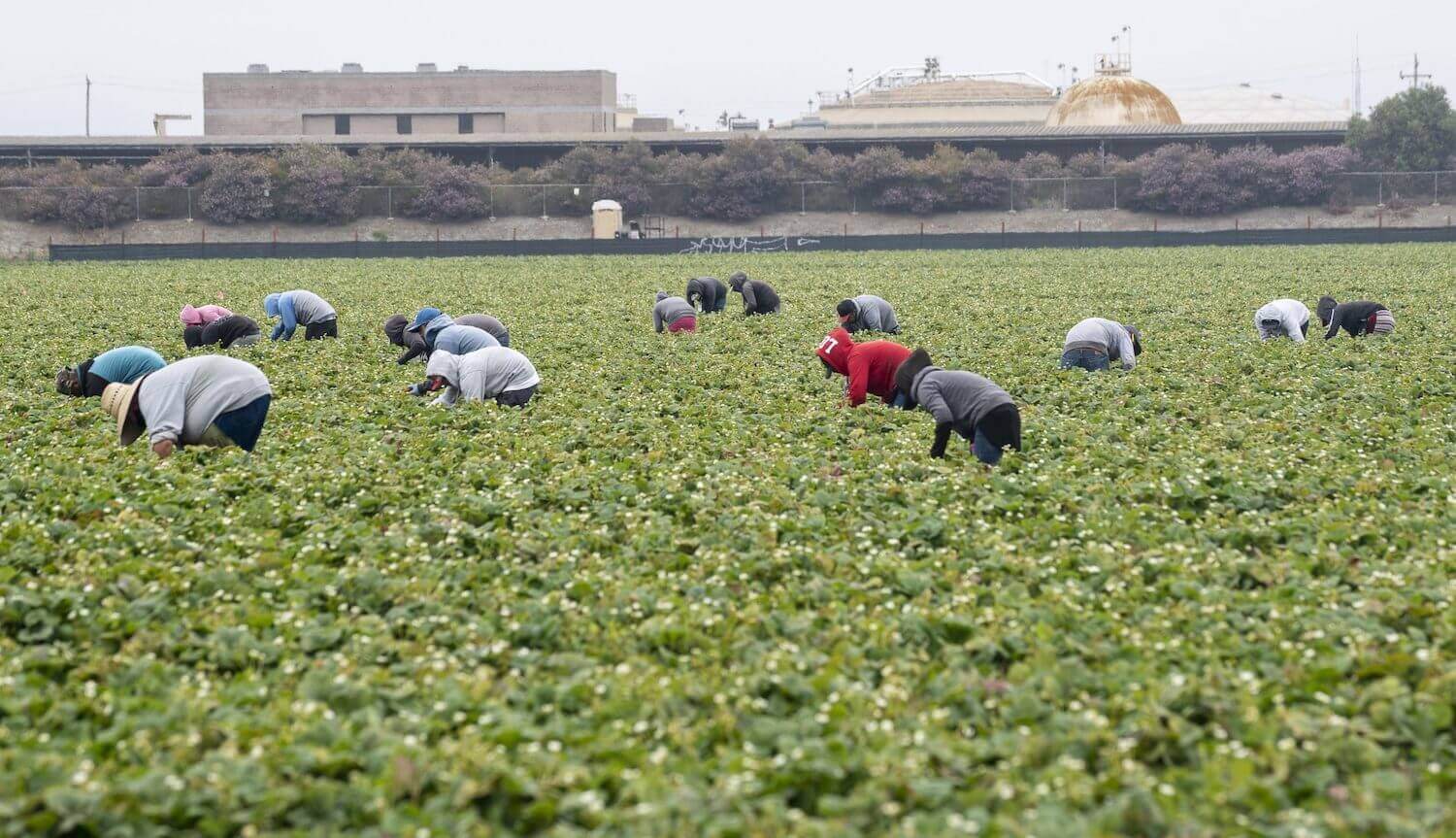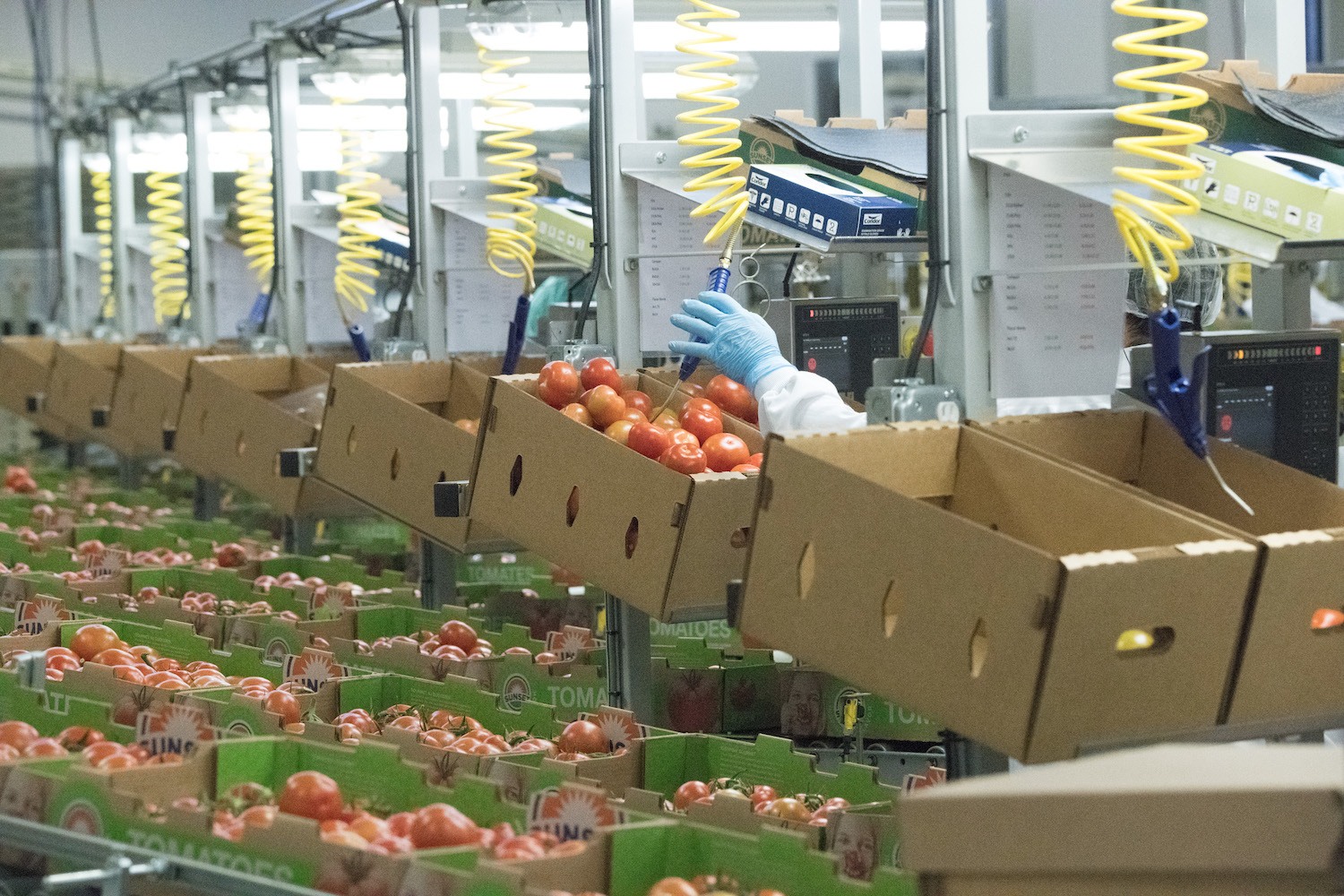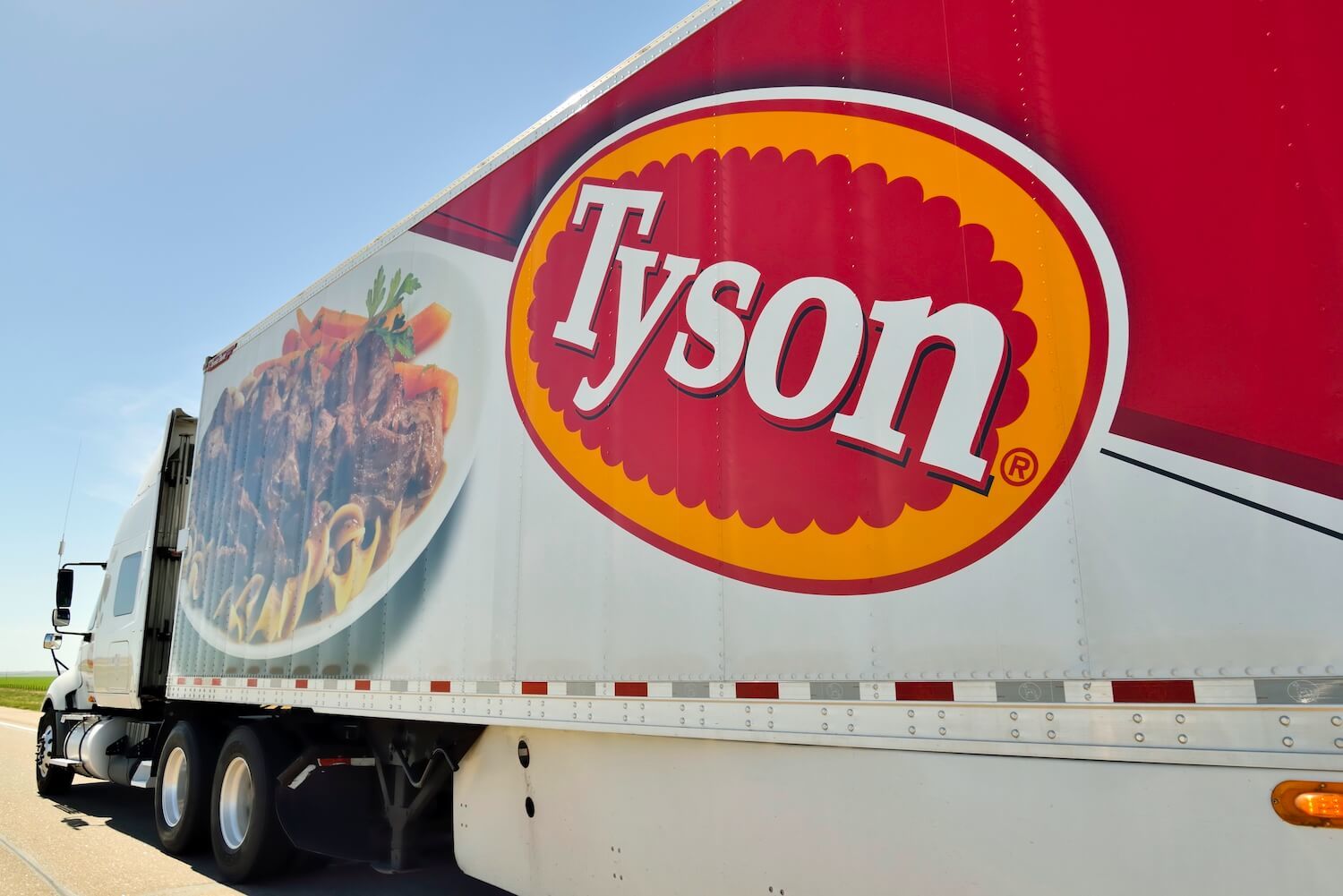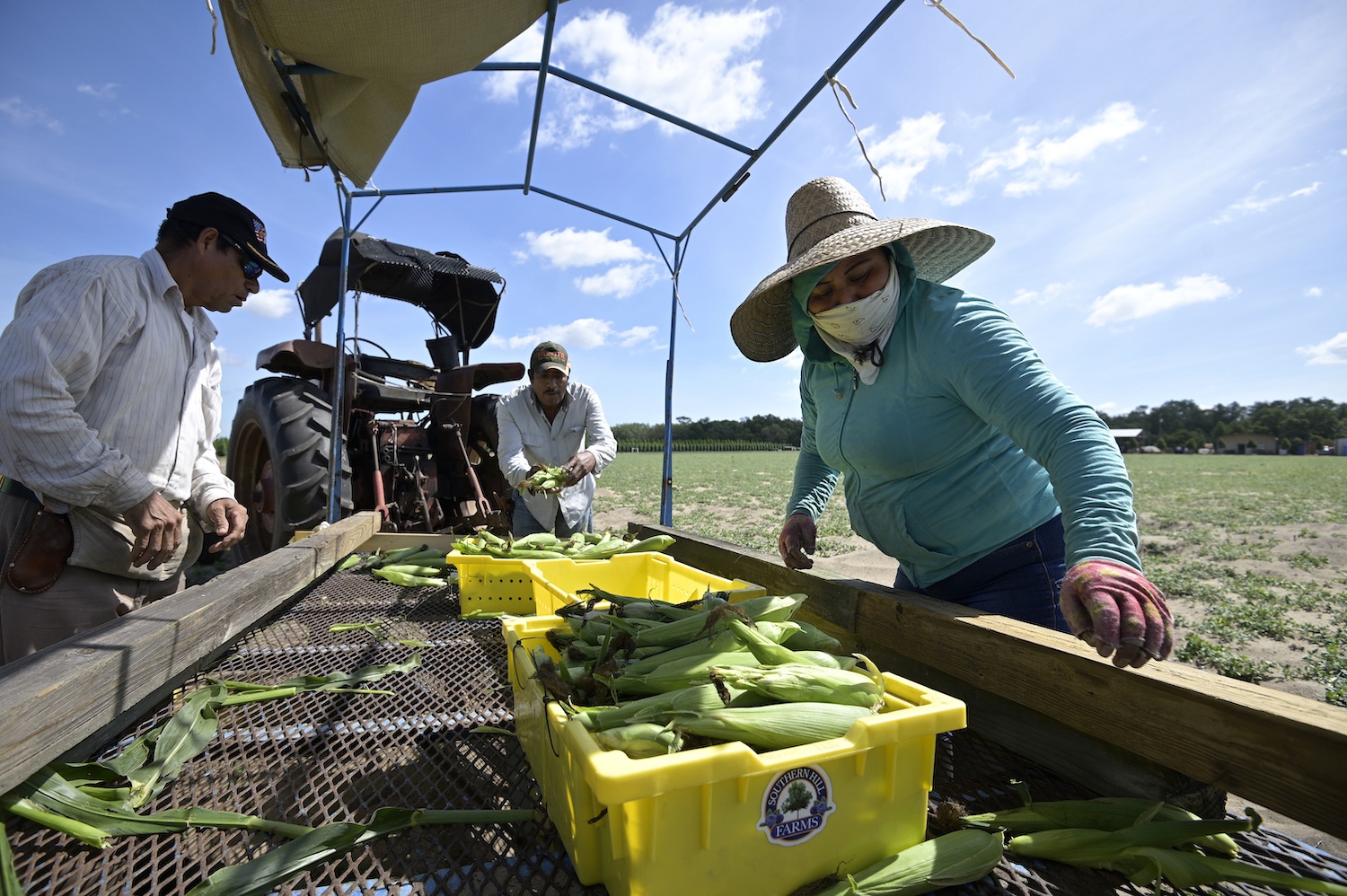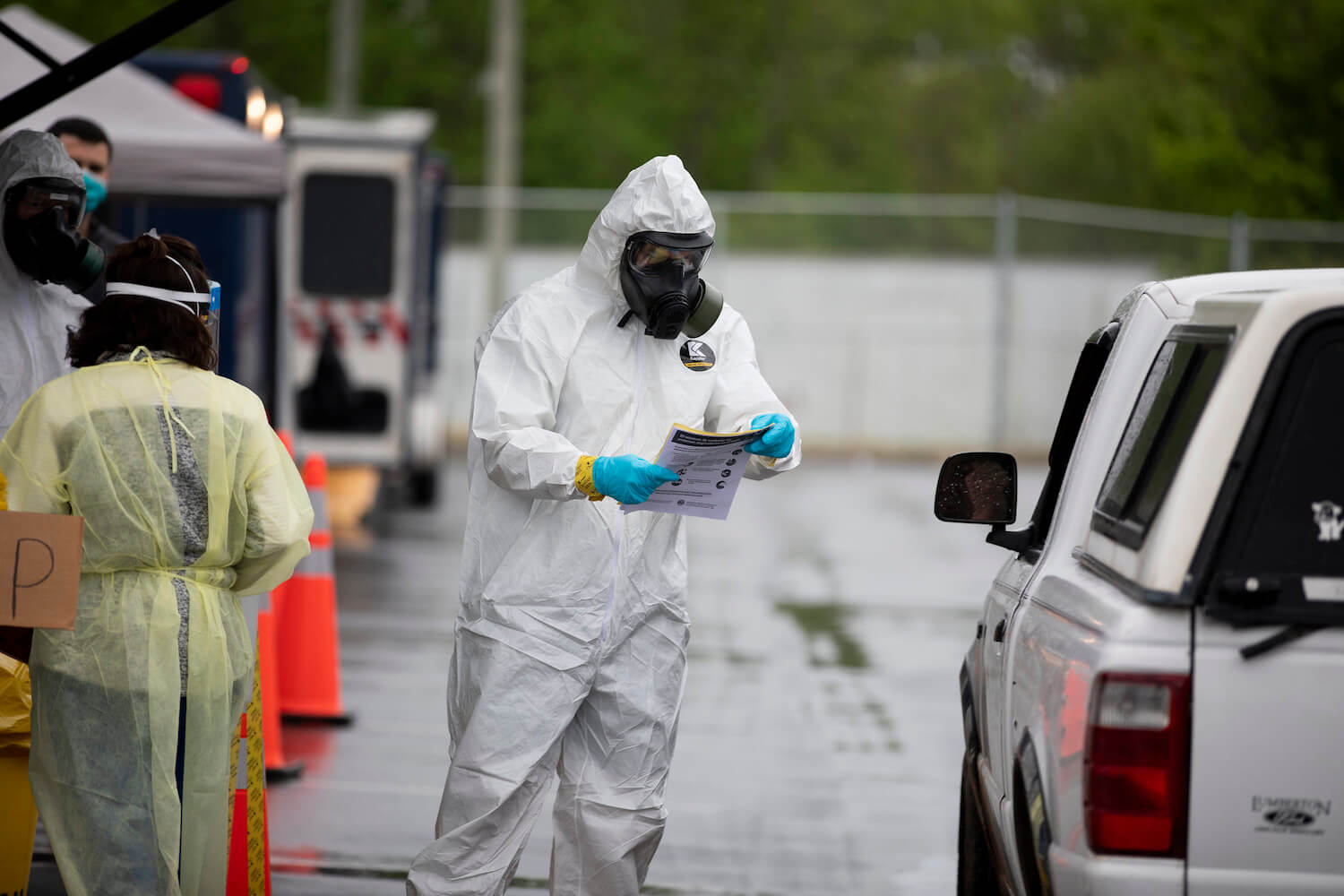
Staff Sgt. Mary Junell / The National Guard
By now, the basic tenets of Covid-19 safety are known. Implementing them in a food processing facility mandated to uphold food safety standards requires a whole other set of safeguards.
On Wednesday, the Food and Drug Administration (FDA), which regulates 77 percent of our national food supply, released a worker safety checklist for farms and food processors to follow during the Covid-19 pandemic.
The move was unusual because worker safety doesn’t fall under FDA’s purview. “Their mandate is to protect the food, not the people,” said Ben Chapman, a food safety specialist at North Carolina State University.
But five months into the pandemic, tens of thousands of FDA-regulated employers still lack desperately needed guidance on implementing strong safety protocols, and are largely left alone to police themselves. According to multiple food safety experts we talked to for this story, confusion persists—among food manufacturers who don’t know what to do when a worker gets sick, produce companies who don’t know how to socially distance their workers in fields and packing sheds, and farmers who don’t know how to stop the virus from spreading in temporary housing for their field hands.
Hundreds of FDA-regulated food facilities have weathered coronavirus outbreaks, and dozens of workers have already died, according to ongoing reporting from Leah Douglas at the Food and Environment Reporting Network (FERN).
“People have been looking for this. It will be welcomed by many operators.”
Even though the agency’s checklist is based on guidance that’s already been made available by the Centers for Disease Control (CDC) and Occupational Safety and Health Administration (OSHA), experts we interviewed said that just compiling the suggestions in one place, in language that the food industry can understand, could be a tremendous help to employers who have been left alone to navigate a frightening, ever-changing public health crisis.
“People have been looking for this,” said Kara Morgan, associate director for the Center for Foodborne Illness at Ohio State University. “It will be welcomed by many operators.”
The 16-page checklist is broken into two sections: one for employee safety, and another to ensure a safe food supply. Currently, there is no evidence that the coronavirus itself can be transmitted through food or packaging. But in March, when FDA paused routine surveillance of food manufacturers and handlers because of the pandemic, the broader system of food safety checks and balances, which relies on well-trained workers who can show up to conduct in-person inspections, seemed at grave risk.
We asked food safety and labor experts to weigh in on whether FDA’s checklist gets employers any closer to a coherent set of standards that take into account the food industry’s specific needs. Here’s what they told us.
Reengineer the processing line, or the field
Produce plants and packing sheds operate, in many ways, like meat plants. Employees work close together, on continuously moving lines, to process fruits and vegetables. That workplace engineering has contributed to Covid-19 spread and put employers and workers on edge. Chapman, who helped design Covid-19 training materials used by restaurants, produce processors, and other food companies, said many of these companies are still confused about what they should do when one of those workers contracts the virus.
“Even if someone is trying to take this abstract concept of social and physical distancing, how do you actually apply this in your food business? It’s difficult. You need to see visuals for it.”
“I get questions every day about, what happens when I have someone who gets sick?” he said. “Many of the restrictions in the public health guidance that’s out there is not specific enough to the food industry, because we’re trying to manage things for all different sectors.”
Chapman did praise the plan for its diagrams on how to socially distance workers in farm fields or packing facilities, which demonstrate how to keep people at least six feet apart from each other, and to integrate physical barriers, such as partitions, when workers must stand across from each other on the line.
“In my role as a food safety extension specialist, I am getting those questions still, every day, about how to do social distancing,” he said. “Even if someone is trying to take this abstract concept of social and physical distancing, how do you actually apply this in your food business? It’s difficult. You need to see visuals for it.”
Establish a Covid-19 point person
In the checklist, FDA suggests that farms and food plants designate someone to be in charge of Covid-19 protocols, namely to develop and implement a Covid-19 assessment and control plan, as recommended by CDC. That coordinator should also set up protocols for social distancing and screening employees for symptoms, serve as the point of contact for employees who suspect they may be sick, and establish ongoing communication with state and local public health officials.
Chapman said that approach mimics food safety protocols for FDA-regulated workplaces. Since the passage of the Food Safety Modernization Act (FSMA), the last major food safety regulation, signed into law in 2018, companies have been required to maintain a food safety plan, known as a Hazard Analysis Critical Control Point (HACCP) system, which identifies weaknesses in production and sets out protocols for addressing the risks.
The first step in that process, Chapman points out, is to assemble a team, including a point person. FDA recommends the same for mitigating the impact of Covid-19—although a HACCP coordinator is a full-time, paid staff position. With the exception of a few major food companies, few have hired full-time Covid-19 coordinators.
More enforcement needed?
This isn’t FDA’s first effort to halt the spread of a virus affecting America’s workforce—though the pandemic’s scale is new territory. The agency also provides guidance and suggestions for controlling the spread of norovirus, a highly contagious virus that causes vomiting and diarrhea. It was one of the culprits in a series of foodborne illness outbreaks that cost fast-casual chain Chipotle $25 million to resolve. (Norovirus can be transmitted via direct contact with an infected person, through consuming contaminated food or water, or touching contaminated services and putting unwashed hands in your mouth.)
“That’s one of our concerns, that every risk decision is a trade-off. Foodborne illness takes a long time to be detected, and anything not discovered because of the gap, we may or may not be seeing it now.”
As is also true of the Covid-19 safety recommendations, top priority for controlling norovirus’s spread is keeping sick employees at home. But Chapman said the agency does little to enforce employer compliance with that guidance, and as a result, sick employees often feel pressured to stay on the job.
In FDA’s Covid checklist is the suggestion that employers quarantine workers who have the virus or have come into contact with suspected carriers. But that would require employers to know first. So FDA suggests screening workers and setting up procedures so that those who’ve shown symptoms can either isolate at home or elsewhere, away from the facility. In situations where employers are responsible for transporting workers to and from work, as is often the case for farms reliant on migrant guest workers, they should provide “alternate transportation” to stop the spread.
“It’s still something we need to reinforce every day,” Chapman said. Unlike the USDA, which stations its inspectors in every meat processing facility, FDA simply doesn’t have enough people to enforce these guidelines on-site at farms, seafood and produce processors. FDA inspectors make routine visits to facilities no more than three times a year, he said, with some plants going years between visits.
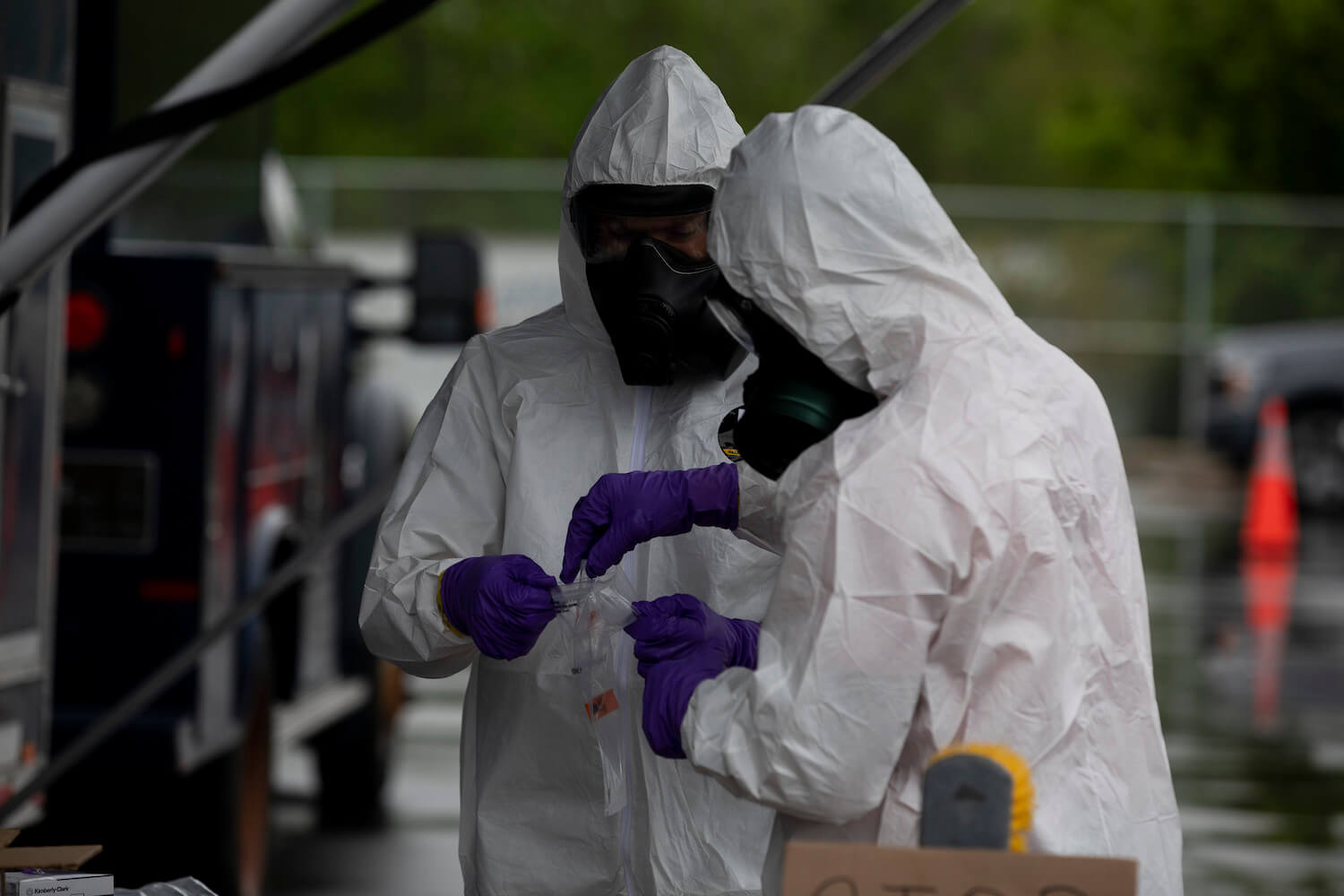
Drive-thru and walk-up Covid-19 testing for employees at the Chatham County food processing plant in North Carolina.
“My experience is, if a business cares, and if they care about the health of customers and employees, they will self-enforce,” Chapman said. “Having punishments or penalties only works if we have a way to put teeth to that. And I’m not sure we’re in a situation where we can do that.”
FDA has 1,542 food and drug inspectors, according to an agency spokesman. The agency did not say how many plants and facilities are under its jurisdiction, but Tony Corbo, a lobbyist with Food and Water Watch, a consumer advocacy group, estimates the number to be over 80,000.
Maintain food safety standards
During FDA’s four-month hiatus of routine inspections, the agency didn’t report any major outbreaks of foodborne illness, like the salmonella outbreak in onions that continues to expand in the U.S. and Canada. But that doesn’t mean they didn’t happen, according to Morgan, the Ohio State University research scientist. She and her colleagues worry that intense public health focus on Covid-19 has come at the expense of a safe food supply.
“That’s one of our concerns, that every risk decision is a trade-off,” she said. “Foodborne illness takes a long time to be detected, and anything not discovered because of the gap, we may or may not be seeing it now.”
Morgan applauded FDA for including guidance on how operators can maintain food safety protocols if they have fewer people in their plants, due either to illness or having reduced capacity to curb workplace spread. Those steps include training new personnel in food hygiene and food safety, and implementing controls and audits for new suppliers, in the event that a company’s usual supplier has closed.
“That’s costing them money, but guess what, smart capitalists are saying, having healthy workers is in our own self-interest.”
The checklist advises manufacturers that are reopening after a prolonged closure to review water and plumbing systems, to ensure that no mold, Legionella, or any pests have taken up residence. (All of the food safety guidance is already required by federal statute.)
However, Morgan said some of the new controls for worker safety, like increased ventilation, may pose a problem in facilities that are sealed off from outside air. While produce sheds, for instance, are usually open to air, dairy plants are not, and are vulnerable to airborne pathogens or contaminants. She said FDA should have a more explicit discussion of those trade-offs.
Socially distance workers, even when they’re off the job
At this point, the basic tenets of Covid-19 safety are well-known, said Don Schaffner, a Rutgers food scientist and extension agent. “We know it’s about physical distancing, and if you can’t physically distance, then wear masks and face coverings,” he said. “Further down would be hand washing and hand sanitizing, and cleaning and sanitizing surfaces.”
The problem with the checklist, he said, is that those safety measures aren’t tiered. They all have equal weight, which doesn’t help employers who are trying to determine which steps are most important (and will require investment), and need to be taken first. Nor does it meaningfully differentiate between different types of food facilities. A canning facility, for instance, with huge pressure cookers, and lots of automated processing, is more likely to have plenty of space for people, and social distancing is easier to implement.
Less so, Schaffner points out, in meatpacking, produce processing, and farming—where it’s not just the working conditions that force people together, but also the temporary housing, where seasonal workers live very close together, in small rooms. A possible solution for employers and landlords, Schaffner suggested, is to keep a part of the housing facility sectioned off for quarantine, where sick workers can safely isolate from others.
“That’s costing them money, but guess what, smart capitalists are saying, having healthy workers is in our own self-interest,” Schaffner said.
The problem with the checklist is that those safety measures aren’t tiered. They all have equal weight, which doesn’t help employers who are trying to determine which steps are most important.
Isolated housing for sick farmworkers is now required by law in Michigan, though it’s not explicitly suggested in the FDA’s checklist. Instead, the agency suggests that employers who house their workers develop “personal preventive measures” and “approaches for social distancing” in kitchens, bathrooms, and bedrooms.
Overall, food safety professionals are encouraged by FDA’s move to release the checklist, which is available online. Food companies are necessarily more frequently in contact with that agency than with others involved in the public health crisis, and may be turning to it for advice—even when that advice is typically outside its jurisdiction. During the pandemic, that’s not unique to FDA. USDA has also collaborated with an industry group to help spread the word about safety precautions for meatpackers. That group, however, is a private trade association that represents packers, not workers.
Step away, into the expert pool on worker safety, and experts are likely to be unmoved by the latest batch of suggested protocols, given that the FDA checklist is a summary of pre-existing guidance—none of which are enforceable by law. In short, it’s useful, but toothless, they say. “It’s an interesting document,” said Susan Schurman, former dean of the Rutgers School of Management and Labor Relations, of the checklist. “But it’s not required, so there’s no way to know if anyone’s following it.”

